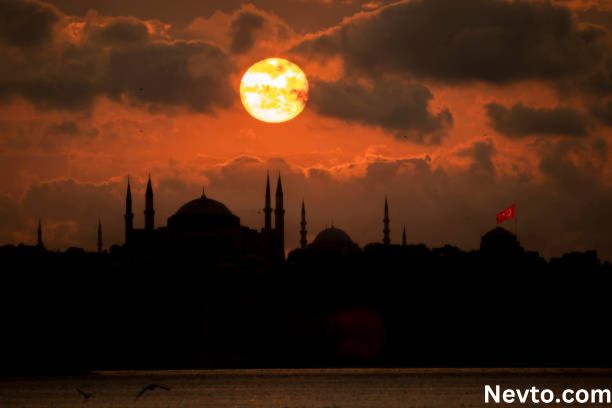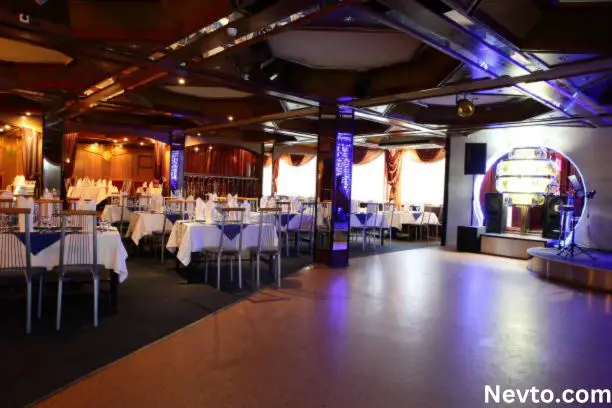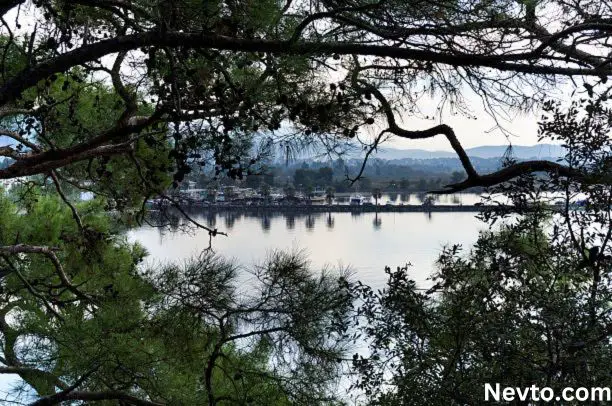Al-Hamra Mosque, Fes, Morocco – All about to know
The Al-Hamra Mosque, also called the Red Mosque, is a Marinid-technology mosque in Fes, Morocco. It is a neighborhood Friday mosque placed at the Grande Rue (“Great Street”) of Fes el-Jdid, the palace metropolis based by the Marinid rulers.
The fundamental prayer hall is a huge, domed area with a valuable mihrab and minbar. The mihrab is decorated with complicated mosaics and carvings, whilst the minbar is made from carved wood. The prayer corridor is also domestic to some of the other ornamental features, which include carved stucco, glazed tiles, and marble columns.
Here are some extra details about the mosque:
- The mosque is approximately one hundred twenty meters lengthy and 70 meters extensive.
- The primary prayer corridor can accommodate up to twenty,000 people.
- The mosque has minarets, considered one of which is 60 meters tall.
Table of Contents
History of Al-Hamra Mosque in Fes, Morocco
The Al-Hamra Mosque is one of the most vital spiritual and cultural landmarks in Fes. It is a popular tourist vacation spot and is also used for spiritual offerings and events.
The Al-Hamra Mosque, additionally called the Red Mosque, is a surprising instance of the Marinid-technology structure in Fes, Morocco. Its implementing red-brick exterior and tricky interior layout have made it a landmark of the metropolis for centuries. Here’s a glimpse into the records of this iconic mosque:
Construction and Early Years:
While the exact date of construction remains unknown, the Al-Hamra Mosque is believed to have been constructed in the thirteenth century during the reign of Marinid sultan Abu Yusuf Yaqub.
- The mosque’s call, “Al-Hamra,” translates to “The Red”, referencing its distinctive crimson-brick exterior constituted of neighborhood clay. This color became regularly utilized in Marinid architecture and served as an image of strength and royalty.
- The mosque was constructed as a local Friday mosque, which means it changed into the number one area of worship for the network and was used for Friday prayers.
Cultural Significance and Tourism:
The Al-Hamra Mosque stands as a testament to the rich history of Islamic structure in Fes. It serves as an area of worship for the network and a symbol of the town’s cultural identification.
- The mosque is a famous traveler destination, attracting visitors from around the sector who surprised at its architectural beauty and historical significance.
- In 1981, the Al-Hamra Mosque turned into inscribed as a UNESCO World Heritage Site as part of the Medina of Fez. This recognition similarly highlights the mosque’s importance as a cultural landmark and treasure of Moroccan heritage. Read Lake Minnetonka, Minnesota
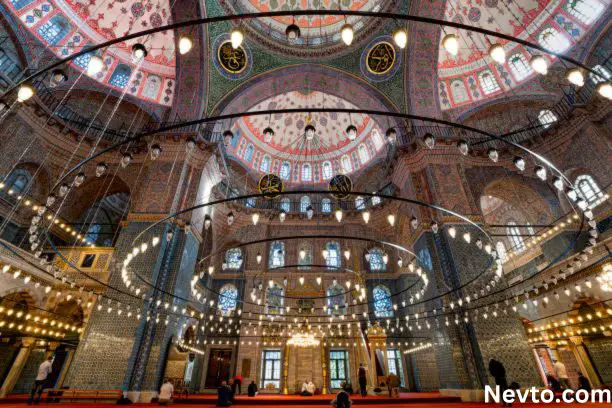
Who is the founder of Al-Hamra Mosque?
Unfortunately, the precise founding father of the Al-Hamra Mosque isn’t always definitively recognized. There are two foremost theories approximately who it might be:
1. Sultan Abu Yusuf Yaqub: This theory is based on historic assets and architectural similarities. The Al-Hamra Mosque’s production fashion aligns with other homes recognized to have been commissioned with the aid of Abu Yusuf Yaqub in the course of his reign in the 13th century.
2. Sultan Abu al-Hasan: This theory is based totally on the architectural similarities between the Al-Hamra Mosque and the Sidi Boumediene Mosque in Tlemcen, Algeria. Both mosques have been constructed around the same time and proportion many layout factors.
3. Georges Marçais, a famous French architect and historian, proposed that the identical architect constructed each mosque underneath the identical ruler, suggesting Abu al-Hasan as the feasible founder of the Al-Hamra Mosque.
Though the founder’s identity remains unsure, each Abu Yusuf Yaqub and Abu al-Hasan have been effective rulers who played large roles in shaping the architectural panorama of the Marinid dynasty. The Al-Hamra Mosque stands as a testimony to their contributions to Islamic art structure.
Architecture of the Al-Hamra Mosque, Fes, Morocco
The Al-Hamra Mosque acknowledged for its placing purple-brick outside, showcases a unique mixture of architectural styles and capabilities that replicate its Marinid-generation production. Here’s a better study of its key architectural factors:
Overall Layout:
- Rectangular floor plan: The mosque follows a square format, with a spacious courtyard (sahn) occupying the northern element.
- Courtyard (Sahn): Surrounded by way of arcaded galleries on 3 aspects, the sahn gives a shaded, open space for prayer and contemplation.
- Main Prayer Hall: Positioned on the south facet of the sahn, the main prayer hall is a sizable, domed space.
Key Architectural Features:
- Red Brick Exterior: The most striking feature is the red-brick exterior, created from nearby clay. Red turned into a preferred color in the Marinid structure and symbolized power and royalty.
- Arcades: Elegant arcades line the courtyard and the indoor walls, developing an experience of rhythm and openness.
- Mihrab: The primary mihrab, a gap indicating the direction of prayer in the direction of Mecca, is a masterpiece of craftsmanship. It’s embellished with elaborate mosaics and carvings, showcasing geometric patterns and arabesque designs.
- Minbar: The finely carved wooden minbar, a raised platform used for handing over sermons, adds to the decorative richness of the interior.
- Domes: The fundamental prayer corridor is topped by an amazing dome, showcasing problematic geometric patterns and highlighting the architectural prowess of the Marinid technology.
- Muqarnas: The transition from the dome to the rectangular space underneath is decorated with muqarnas, a kind of honeycomb-like ornamentation, that provides depth and visual hobby.
- Stucco Decorations: Walls at some point of the mosque were embellished with complicated stucco-carved decorations, offering geometric motifs, arabesque styles, and calligraphic inscriptions.
- Glazed Tiles: The use of colorful glazed tiles adds vibrant accents and contributes to the overall ornamental scheme.
- Marble Columns: Slender marble columns add a touch of beauty to the interior and assist the arches and arcades
Significance:
The architecture of the Al-Hamra Mosque embodies the creative and technological achievements of the Marinid generation. It serves as a testament to the sophistication and creativity of Moroccan architects and craftsmen and continues to encourage awe and admiration via its difficult details and architectural grandeur. Read Hogan Park at Highlands Creek- All about to know
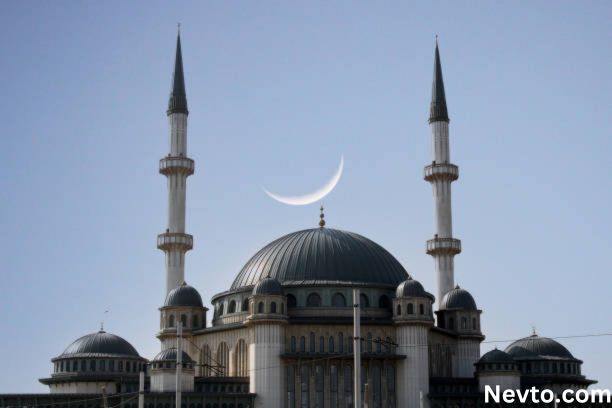
Islamic Calligraphy at Al-Hamra
The Al-Hamra Mosque showcases numerous styles of Islamic calligraphy, each with its particular traits:
- Kufic script: This angular script, with its formidable, geometric strokes, is the oldest shape of Islamic calligraphy and is frequently used for inscriptions on spiritual homes.
- Naskh script: This fashionable and legible script is broadly used for Qur’anic transcriptions and non-secular texts. Its flowing lines and clear letterforms make it clean to examine and recite.
- Thuluth script: This majestic script functions elongated vertical strokes and flourishes, growing a decorative and imposing effect. It is likewise frequently used for headings and titles in manuscripts and inscriptions.
- Muhaqqaq script: This script is characterized by its massive letterforms and formidable strokes, making it specifically proper for monumental inscriptions. Its balanced composition and rhythmic flow enhance the beauty of the architectural factors.
Locations of Calligraphy:
The calligraphic inscriptions at the Al-Hamra Mosque are strategically region to enhance the non secular surroundings and bring spiritual messages:
- Mihrab: The mihrab, the area of interest indicating the course of prayer, capabilities tricky calligraphy praising Allah and the Prophet Muhammad.
- Walls: The partitions during the mosque enhance with calligraphic panels containing verses from the Quran, hadiths (sayings of the Prophet), and also religious invocations.
- Ceilings: The ceilings in certain regions show calligraphic designs, adding a layer of artistic complexity to the architectural space.
Significance of Calligraphy:
The Islamic calligraphy at the Al-Hamra Mosque is going beyond mere decoration. It additionally serves multiple purposes:
- Religious expression: The calligraphic inscriptions carry non secular messages and teachings, reminding worshippers in their faith and guiding them in the direction of spiritual reflection.
- Artistic beauty: The difficult calligraphy provides to the aesthetic appeal of the mosque, growing a feel of awe and wonder.
- Cultural heritage: The calligraphy showcases the wealthy inventive subculture of Islamic art and calligraphy, keeping it for future generations.
- Historical file: The inscriptions can offer valuable records approximately the mosque’s production date, purchasers, and the cultural context of the time.
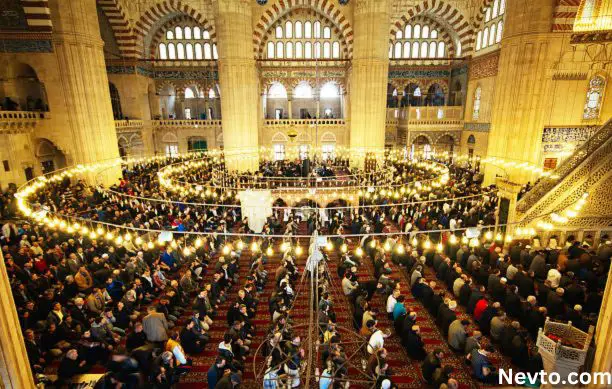
Al-Hamra’s Religious Practices
The Al-Hamra Mosque in Fes, Morocco, serves as a colourful middle of religious exercise for the Muslim community. Beyond its architectural beauty, the mosque fosters a rich tapestry of traditions and additionally rituals that manual the lives of its worshippers. Let’s delve into the coronary heart of Al-Hamra’s non secular practices
1. Daily Prayers:
- Five Daily Prayers: The Al-Hamra Mosque echoes with the collective recitation of prayers 5 times a day: Fajr (dawn), Zuhr (noon), Asr (afternoon), Maghrib (sundown), and Isha (night time).
- Adhan (Call to Prayer): The melodic name to prayer, resonating from the mosque’s minaret, summons worshippers to enroll in the congregation and additionally satisfy their religious duty.
- Congregation: Muslims collect in the spacious prayer hall, aligning themselves in the direction of the mihrab, a niche that still indicates the course of Mecca.
2. Friday Prayers:
Jumu’ah: Every Friday, the mosque witnesses a bigger collecting for the unique Friday prayers. This obligatory service consists of a sermon added by using the Imam, followed by means of prayers and supplications.
Importance: Friday prayers keep vast religious and social importance, fostering network spirit and reminding believers of their collective duty.
3. Ramadan and Eid:
- Ramadan: During the holy month of Ramadan, the mosque transforms right into a hub of multiplied piety and devotion. Muslims observe fasting from sunrise to nightfall, attending special night time prayers (Taraweeh) and attractive in Quranic recitation.
- Eid al-Fitr and Eid al-Adha: The joyous celebrations of Eid al-Fitr and Eid al-Adha mark the fruits of Ramadan and the Hajj pilgrimage, respectively.
4. Quranic Recitation and Learning:
- Tahfidh: The mosque presents opportunities for people to study and memorize the Quran, a exercise known as Tahfidh.
- Spiritual Guidance: Visitors in search of non secular steerage can visit Imams and scholars at the mosque, receiving advice and guide on various non secular matters.
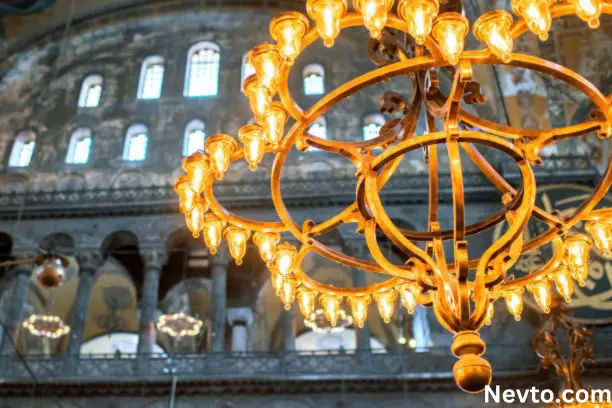
Events at Al-Hamra Mosque, in Fes, Morocco
While the Al-Hamra Mosque basically serves as a place of worship and religious studying, there are quite a few activities that take area inside its partitions or surrounding place. Here’s an overview of the varieties of occasions you may encounter at the Al-Hamra Mosque:
Religious Events:
- Friday Prayers: Every Friday, the mosque might have hosted the main congregational prayer for the network. Imams would lead the prayers and deliver sermons, fostering a experience of cohesion and non secular practice.
- Ramadan Observances: During the holy month of Ramadan, the mosque would be a valuable hub for increased prayer, recitation of the Quran, and spiritual reflection. Special nightly prayers called Tarawih would be held, attracting big gatherings of worshippers.
- Festival Celebrations: Religious gala’s like Eid al-Fitr and Eid al-Adha could also be celebrate with unique prayers and festivities at the mosque, fostering a sense of community and pleasure.
Educational Events:
- Quranic Studies: The mosque could probably have been a center for Quranic recitation and studying. Scholars and teachers could lead periods where college students memorized and studied the Quran, deepening their expertise of Islamic scripture.
- Religious Lectures: Renowned students and religious figures would possibly have added lectures and sermons at the mosque, providing spiritual guidance and insights to the community.
- Calligraphy and Arabic Language Classes: The mosque could have been a area for studying calligraphy, the art of writing Arabic script beautifully, and for growing skillability inside the Arabic language, vital for spiritual have a look at and cultural knowledge.
Historical Events:
- Marinid Dynasty: The construction of the Al-Hamra Mosque in the thirteenth century coincided with the reign of the Marinid dynasty, a length of cultural and political flourishing in Morocco. The mosque can be visible as a testomony to the Marinid’s architectural achievements and power.
- French Protectorate: During the French protectorate of Morocco (1912-1956), the Al-Hamra Mosque served as a symbol of resistance and cultural identification for the Moroccan humans. It became a focal point for demonstrations and gatherings against French rule.
- Independence Movement: The mosque performed a role in the Moroccan independence movement, with nationalist leaders often giving speeches or retaining conferences within its walls.
Cultural Events:
- Fes Festival of World Sacred Music: Held annually in Fes, this renowned competition frequently includes the Al-Hamra Mosque as a venue for concerts and performances providing non secular track from numerous traditions.
- Sufi Music and Poetry Recitals: The mosque has hosted conventional Sufi song and poetry recitals, imparting a completely unique cultural enjoy for traffic and locals.
- Crafts and Souk Activity: The bustling souk (marketplace) surrounding the Al-Hamra Mosque is a hive of activity and cultural exchange, showcasing Moroccan crafts and traditions. Read Discover the Top 6 Best Landscape Places in the World
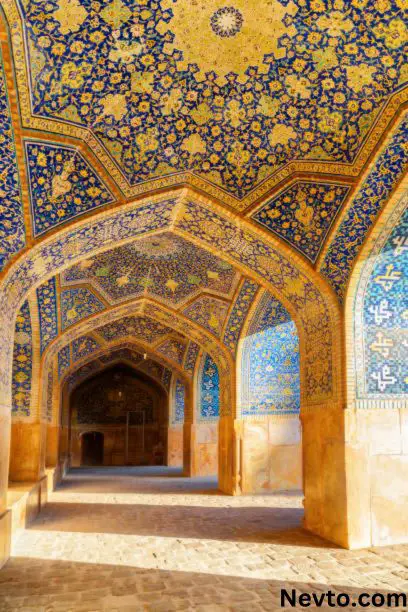
Other popular mosques in Fes, Morocco
Fes, Morocco, boasts a rich culture of Islamic structure, with severa mosques fascinating visitors with their specific styles and histories. Here are a few different popular mosques in Fes, alongside the Al-Hamra Mosque:
1. Kairaouine Mosque (Mosque of al-Qarawiyyin):
- Considered the oldest constantly running college in the global, installed in 859 AD through Fatima al-Fihri.
- Renowned for its considerable prayer corridor, tricky mosaics, and towering minaret.
- Attracts massive congregations for each day prayers and unique occasions like Ramadan and Eid.
2. Bou Inania Madrasa:
- This 14th-century madrasa (religious college) is famend for its exceptional zellij (mosaic tilework) and tricky wood carvings.
- Features a spell binding relevant courtyard with a fountain and surrounding galleries.
- Offers a glimpse into the conventional architectural fashion of Marinid madrasas.
3. Attarine Madrasa:
- Located within the heart of the Fes el-Bali medina, this 14th-century madrasa boasts stunning geometric patterns and arabesque decorations.
- Features a lovely courtyard with a critical fountain and four iwans (arched halls).
- Houses a museum showcasing Islamic art and artifacts.
4. Chrabliyine Mosque:
- This fascinating 19th-century mosque is thought for its colourful green tilework and specific horseshoe-fashioned arches.
- Offers a tranquil surroundings and a picturesque putting within the medina.
- Popular amongst locals and tourists alike for its peaceful ambiance.
5. Sidi Ahmed Tijani Zawiya:
- This zawiya (religious complicated) is dedicated to the founding father of the Tijaniyya Sufi order.
- Features a stunning courtyard, a mausoleum, and a library containing Sufi manuscripts.
- Serves as a pilgrimage site for Tijani followers and gives a glimpse into Sufi practices.
These are just a few of the numerous notable mosques in Fes, Morocco. Each one possesses its unique charm and ancient importance, imparting visitors a numerous perspective on Islamic artwork and structure.

